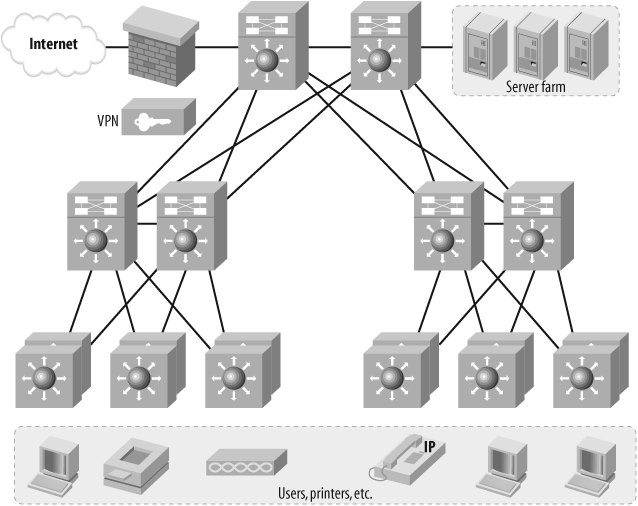Network Designs
I can't tell you how you should design your network. I can show you some of the more common corporate and e-commerce network designs out there, and explain why I've chosen to focus on these designs.
Corporate Networks
Most networks are designed along the lines of the classic three-tier model. The three-tier model has core, distribution, and access levels. These levels are clearly delineated and served by different devices. Traditionally, routing was the slowest, most expensive process. For these reasons, routing was done in the core. All the other levels were usually switched.
With the advent of inexpensive layer-3 switching, the three-tiered model is now often collapsed for corporate networks. We'll look at the traditional model as it might be used today, as well as a couple of collapsed-core models.
Three-tiered architecture
The three-tiered architecture that is most commonly seen in textbooks is still widely used in the industry. Physical separation of the three levels usually occurs when there is a physical need to do so. An excellent example would be a college or business campus: there might be core switches (possibly in a central location), distribution switches in each building, and access switches close to the users in each building. The specifics would depend on the physical layout of the campus. Figure 33-9 shows a textbook three-tiered corporate network.

Figure 33-9. Typical ...
Get Network Warrior now with the O’Reilly learning platform.
O’Reilly members experience books, live events, courses curated by job role, and more from O’Reilly and nearly 200 top publishers.

